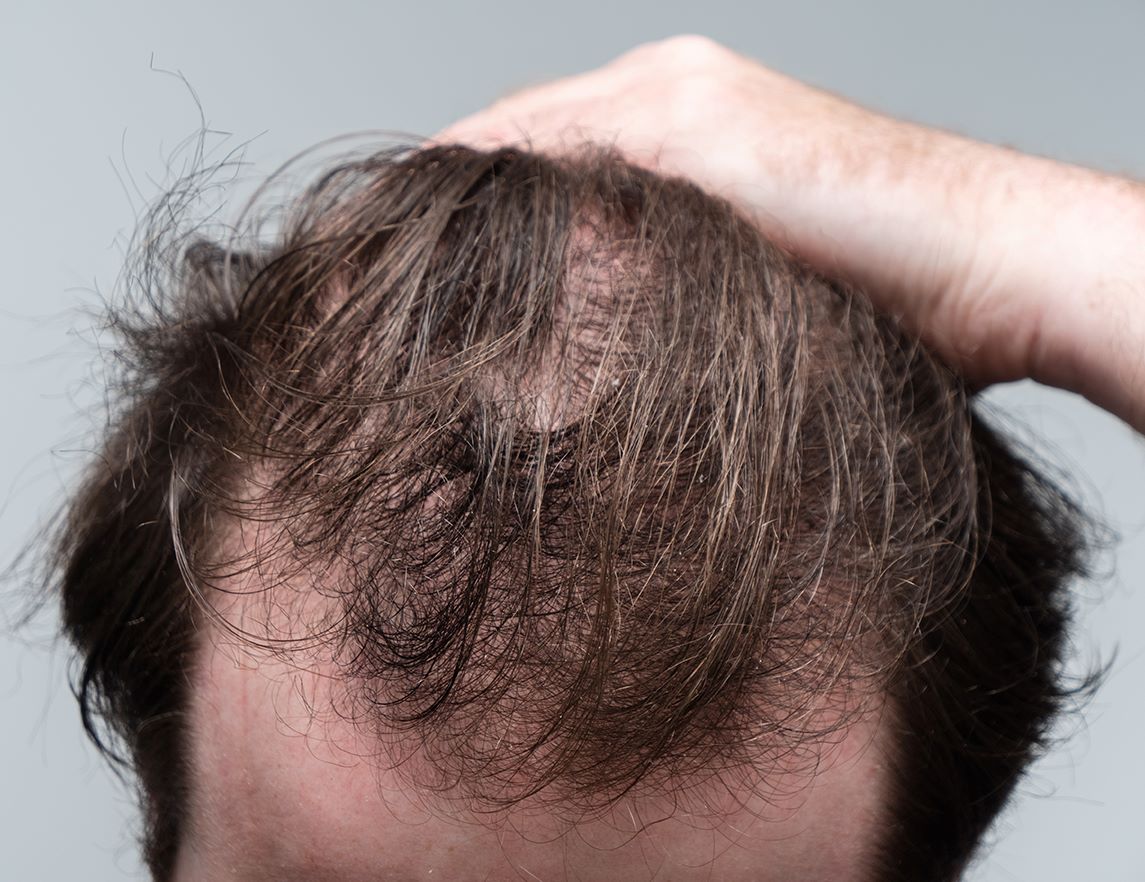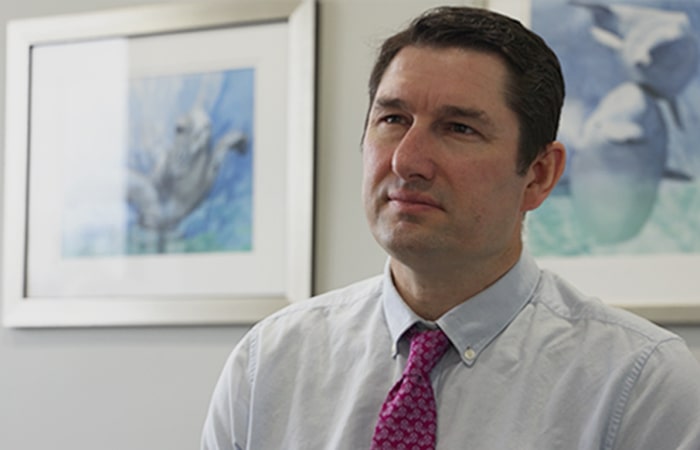
Best Medical Therapy Treatments for Hair Loss in Wisconsin
Are you tired of watching your hair thinning day by day? At DCP, we understand the emotional toll hair loss takes on both men and women. Dr. Steffes can provide you with the best medical therapy treatments for hair growth to help you regain your confidence and achieve healthy hair. Contact us to see which hair loss treatment is best for you!
Hair Loss Symptoms
Hair loss is a common concern affecting individuals of all ages. If you're experiencing any of the following symptoms, consider seeking professional assistance. Dr. Steffes can help you overcome many common hair loss symptoms.
- Gradual Thinning: Thinning hair on the crown of the scalp is a typical sign of androgenetic alopecia, the most common type of hair loss.
- Circular or Patchy Bald Spots: This could be a sign of alopecia areata, an autoimmune condition causing hair to fall out in small, round patches.
- Sudden Hair Shedding: An unusually large amount of hair in your comb or shower drain might be indicative of a more acute condition like telogen effluvium.
- Full-Body Hair Loss: Certain medical conditions, medications or treatments may lead to widespread hair loss on the scalp and body.

Available Medical Therapy Hair Loss Treatments
Dr. Steffes offers Minoxidil and Finasteride for medical therapy hair loss treatments. Minoxidil and Finasteride stand out as two of the most sought-after and scientifically proven options for hair regrowth.
What is Minoxidil?
Minoxidil has been a groundbreaking treatment for hair loss for decades. It is available over-the-counter and has earned its reputation as a reliable choice for those seeking to combat hair thinning and stimulate regrowth.
Minoxidil widens the blood vessels, increasing blood flow to hair follicles. This enhanced circulation delivers essential nutrients and oxygen, supporting the follicles' health and stimulating the growth of thicker, stronger hair strands. Minoxidil also extends the anagen (growth) phase of the hair cycle and shortens the telogen (resting) phase, effectively boosting hair regrowth.
The Minoxidil Application Process
The application process is simple. Minoxidil is available in liquid, foam and oral forms, allowing you to choose the option to best fit your preference. It's applied twice daily to the affected areas of the scalp. While results may vary, many individuals notice a significant improvement in hair density and thickness after consistent use for several months.
Finasteride: Targeting the Root Cause
Finasteride, available by prescription, offers a distinct approach to addressing hair loss. It targets the root cause of hair thinning in individuals with androgenetic alopecia, the most common type of hereditary hair loss.
This condition is driven by the hormone dihydrotestosterone (DHT), which gradually miniaturizes hair follicles over time. Finasteride inhibits the enzyme that converts testosterone into DHT, effectively reducing DHT levels in the scalp. By doing so, it prevents further miniaturization of hair follicles and creates an environment conducive to hair regrowth.
It's important to note Finasteride primarily benefits men with male-pattern baldness and may not be suitable for women. Results from Finasteride treatment are typically observed over a period of several months. Many users experience a noticeable reduction in hair shedding and an increase in hair thickness and coverage. It's important to continue using Finasteride to maintain the results, as discontinuing the treatment may lead to a reversal of progress.
Combining Minoxidil and Finasteride: A Comprehensive Approach
While Minoxidil and Finasteride are effective on their own, some individuals may benefit from using both treatments simultaneously. This combination approach offers a comprehensive solution to target hair loss from multiple angles. Minoxidil promotes improved blood flow and follicle health, while Finasteride addresses the hormonal component by inhibiting DHT production.

Causes of Hair Loss
- Genetics: Family history plays a significant role in androgenetic alopecia.
- Hormonal Changes: Hormonal fluctuations due to pregnancy, childbirth, menopause or thyroid disorders may lead to hair loss.
- Medical Conditions: Certain medical conditions like alopecia areata, lupus and diabetes may contribute to hair loss.
- Medications and Treatments: Radiation therapy, chemotherapy and certain medications for arthritis, depression, heart problems, gout and high blood pressure can cause hair loss as a side effect.
Types of Hair Loss
Understanding the type of hair loss you're experiencing is crucial for determining whether medical therapy is the right solution to your specific hair loss case.
| Hair Loss Types | |
|---|---|
| Androgenetic Alopecia | A hereditary condition often referred to as male-pattern or female-pattern baldness. Individuals experience gradual hair thinning, primarily on the top and front of the scalp. |
| Alopecia Areata | An autoimmune disorder that causes patchy hair loss on the scalp and sometimes the body. |
| Telogen Effluvium | Triggered by stress, illness or hormonal changes, Telogen Effluvium leads to widespread hair shedding. |
| Anagen Effluvium | Often a side effect of chemotherapy or radiation therapy, Anagen Effluvium causes sudden hair loss during the growth (anagen) phase. |
Why Choose Dr. Steffes for Medical Hair Loss Treatments?
Dr. Steffes brings extensive expertise in hair loss, understanding its causes and treatments. His personalized approach tailors treatment plans to your unique needs. See more on Dr. Steffes and his proven track record of success with satisfied patients.
Don't let hair loss hold you back from looking and feeling your best. Contact DCP today for a personalized consultation with Dr. Steffes for options to treat your hair loss. Regain your confidence and take the first step towards achieving healthy, vibrant hair.
Dr. Steffes works with clients nationwide and throughout Southeast Wisconsin and Northern Illinois, including in West Bend, Fond Du Lac, Waukesha, Milwaukee, Madison, Green Bay, Chicago and beyond.
Hair Loss Treatment FAQs
FAQ
What is the recommended usage frequency for Minoxidil?
Minoxidil should typically be applied twice daily, preferably in the morning and evening, to achieve optimal results.
Can I use Minoxidil and Finasteride together?
Combining Minoxidil and Finasteride can have a synergistic effect, potentially yielding better results. However, it's essential to consult with our dermatologists before using them together.
Can women use Finasteride for hair loss treatment?
Finasteride is primarily approved for use in men. However, Dr. Steffe will assess your specific case and recommend suitable alternatives for women.
Are there any side effects associated with Minoxidil?
While rare, some users might experience mild scalp irritation or increased hair shedding initially. Side effects usually subside as your body adjusts to the treatment.
How long does it take to see results with Finasteride?
Results may vary, but many men start noticing improvements in hair growth within three to six months of consistent use.

 Why Choose DCP
Why Choose DCP